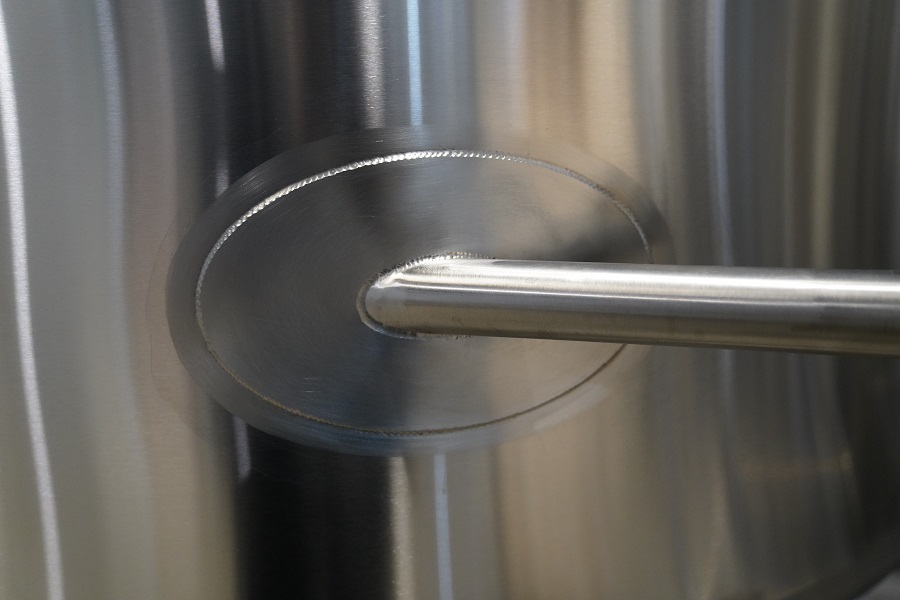We all know that beer brewing is divided into two major steps: mashing and lautering, and mashing can be subdivided into four procedures: mashing, lautering, boiling and whirlpooling. After the boiling stage, the wort is not as clear as you might think. In fact, after boiling, many flocculent thermal coagulations will be formed in the wort, which must be removed before the wort enters the fermenter, which is the purpose of the whirlpooling.

Whirlpool tun is the most commonly used equipment in breweries for separating flocs in wort. It can be a separate tank, or it can be a kettle/whirlpool tank combined with boiling.
Tiantai's whirlpool tank is a cylindrical container with a flat and inclined bottom, the outlet slope is about 1% to 2%, and the tangent inlet is mostly located at 1/3 of the tank height. There are generally 2 to 3 wort outlets, the top outlet is 1/2 to 1/3 below the liquid level, and the second outlet is set at a height of 1/10 from the bottom of the tank. The three wort outlets are also drain outlets.
After the wort is boiled in the boiling tank, the wort will be pumped into the whirlpool tun through a pump. An inclined tangent opening is designed inside the whirlpool tun. The wort will form a large vortex in the tank under the vigorous pushing action of the pump. After pumping in, the pump is turned off and left to stand for a period of time, during which time the solids settle to the bottom of the tank. This is the function of the whirlpool tun.

Open the valve of the top outlet at the end of whirlpooling, the wort at the top has a higher clarity, and when it is lower than the first outlet, open the second outlet. When the wort is coming out of the bottom outlet, keep an eye on the flow, as any quickness can break the solids in the bottom of the tank.
According to this operation, a good whirlpooling effect can be achieved.
The outflowing wort will be cooled by a plate heat exchanger, and then pumped into the fermenter to start the fermentation stage.
Edited by Cassie
E-mail:[email protected]


.jpg)





Get A Quote